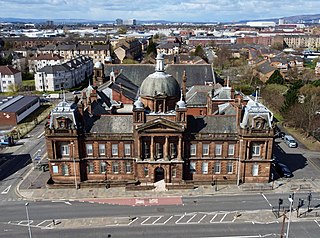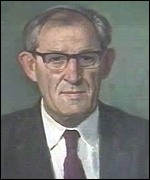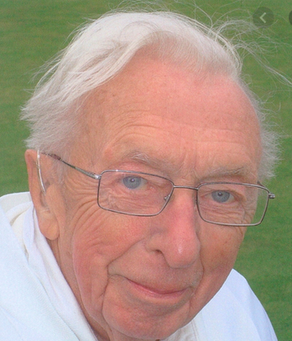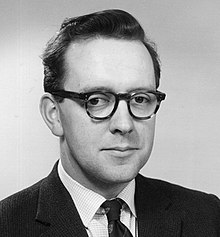
Medical ultrasound includes diagnostic techniques using ultrasound, as well as therapeutic applications of ultrasound. In diagnosis, it is used to create an image of internal body structures such as tendons, muscles, joints, blood vessels, and internal organs, to measure some characteristics or to generate an informative audible sound. The usage of ultrasound to produce visual images for medicine is called medical ultrasonography or simply sonography, or echography. The practice of examining pregnant women using ultrasound is called obstetric ultrasonography, and was an early development of clinical ultrasonography. The machine used is called an ultrasound machine, a sonograph or an echograph. The visual image formed using this technique is called an ultrasonogram, a sonogram or an echogram.

Medical imaging is the technique and process of imaging the interior of a body for clinical analysis and medical intervention, as well as visual representation of the function of some organs or tissues (physiology). Medical imaging seeks to reveal internal structures hidden by the skin and bones, as well as to diagnose and treat disease. Medical imaging also establishes a database of normal anatomy and physiology to make it possible to identify abnormalities. Although imaging of removed organs and tissues can be performed for medical reasons, such procedures are usually considered part of pathology instead of medical imaging.

Govan is a district, parish, and former burgh now part of south-west Glasgow, Scotland. It is situated 2.5 miles (4.0 km) west of Glasgow city centre, on the south bank of the River Clyde, opposite the mouth of the River Kelvin and the district of Partick. Historically it was part of the County of Lanark.

Obstetric ultrasonography, or prenatal ultrasound, is the use of medical ultrasonography in pregnancy, in which sound waves are used to create real-time visual images of the developing embryo or fetus in the uterus (womb). The procedure is a standard part of prenatal care in many countries, as it can provide a variety of information about the health of the mother, the timing and progress of the pregnancy, and the health and development of the embryo or fetus.
Sonicaid Ltd was a medical electronics company headquartered in West Sussex best known for its range of Doppler fetal monitors. The company also developed early ultrasound scanners. The word "Sonicaid" is in generic use for Doppler fetal monitors. Sonicaid is now a registered trademark of Huntleigh Healthcare.
In obstetrics, gestational age is a measure of the age of a pregnancy taken from the beginning of the woman's last menstrual period (LMP), or the corresponding age of the gestation as estimated by a more accurate method, if available. Such methods include adding 14 days to a known duration since fertilization, or by obstetric ultrasonography. The popularity of using this measure of pregnancy is largely due to convenience: menstruation is usually noticed, while there is generally no convenient way to discern when fertilization or implantation occurred.

Ian Donald was an English physician who pioneered the diagnostic use of ultrasound in obstetrics, enabling the visual discovery of abnormalities during pregnancy. Donald was born in Cornwall, England, to a Scottish family of physicians. He was educated in Scotland and South Africa before studying medicine at the University of London in 1930, and became the third generation of doctors in his family. At the start of World War II, Donald was drafted into the Royal Air Force as a medical officer, where he developed an interest in radar and sonar. In 1952, at St Thomas' Hospital, he used what he learned in the RAF to build a respirator for newborn babies with respiratory problems.


Sir Dugald Baird FRCOG was a British medical doctor and a professor of obstetrics and gynaecology. Baird was most notable and influential in calling for the liberalising of abortion. In his delivery of the Sandoz lecture in November 1961, titled the Fifth Freedom, he advocated for freedom from the tyranny of fertility.

Allan Glen's School was, for most of its existence, a local authority, selective secondary school for boys in Glasgow, Scotland, charging nominal fees for tuition.

Kyprianos "Kypros" Nicolaides is a Greek Cypriot physician of British citizenship, Professor of Fetal Medicine at King's College Hospital, London. He is one of the pioneers of fetal medicine and his discoveries have revolutionised the field. He was elected to the US National Academy of Medicine in 2020 for 'improving the care of pregnant women worldwide with pioneering rigorous and creative approaches, and making seminal contributions to prenatal diagnosis and every major obstetrical disorder'. This is considered to be one of the highest honours in the fields of health and medicine and recognises individuals who have demonstrated outstanding professional achievement and commitment to service.
Stuart Campbell DSc FRCPEd FRCOG FACOG, was born in Glasgow, Scotland, and graduated from the medical school of Glasgow University. During his training he worked with Ian Donald, who had published some of the first papers on the use of ultrasound in obstetrics.

The Riverside Museum is a museum in Glasgow, designed by Zaha Hadid Architects, housed in a building at Pointhouse Quay in the Glasgow Harbour regeneration district of Glasgow, Scotland. The building opened in June 2011, winning the 2013 European Museum of the Year Award. It houses many exhibits of national and international importance. The Govan-Partick Bridge will provide a pedestrian link from the museum across the Clyde to Govan. It is set to be completed in 2024.

The Institution of Engineers and Shipbuilders in Scotland (IESIS) is a multi-disciplinary professional body and learned society, founded in Scotland, for professional engineers in all disciplines and for those associated with or taking an interest in their work. Its main activities are an annual series of evening talks on engineering, open to all, and a range of school events aimed at encouraging young people to consider engineering careers.
The Scottish Engineering Hall of Fame honours "those engineers from, or closely associated with, Scotland who have achieved, or deserve to achieve, greatness", as selected by an independent panel representing Scottish engineering institutions, academies, museums and archiving organisations.

Dugald Cameron, OBE, FCSD, FRSA is a Scottish artist and industrial designer.
Professor Donald Macleod FRCSEd, FFAEM (Hon), FFSEM (Hon), FISM was a Scottish former rugby union player and a former President of the Scottish Rugby Union. A retired surgeon, he was the Scotland national rugby union team doctor for many years.

Charles Richard Whitfield FRCOG, FRCP(G) was a Northern Irish obstetrician and gynaecologist who was a pioneer of maternal-fetal (perinatal) medicine. His primary interest was in fetal medicine, a branch of obstetrics and gynaecology that focuses on the assessment of the development, growth and health of the baby in the womb. He was also an early proponent of subspecialisation within the fields of obstetrics and gynaecology, a practice that is common today.

John MacVicar was a British physician who was most notable for pioneering the diagnostic use of ultrasound in obstetrics as well as later, being a clinical educator. MacVicar was part of a team along with physician Ian Donald and engineer Tom Brown, who developed the worlds first obstetric ultrasound machine in 1963. Using the new technique of ultrasound, MacVicar's research transformed the treatment of gynaecological conditions in pregnant women, through the use of clinical trials.














